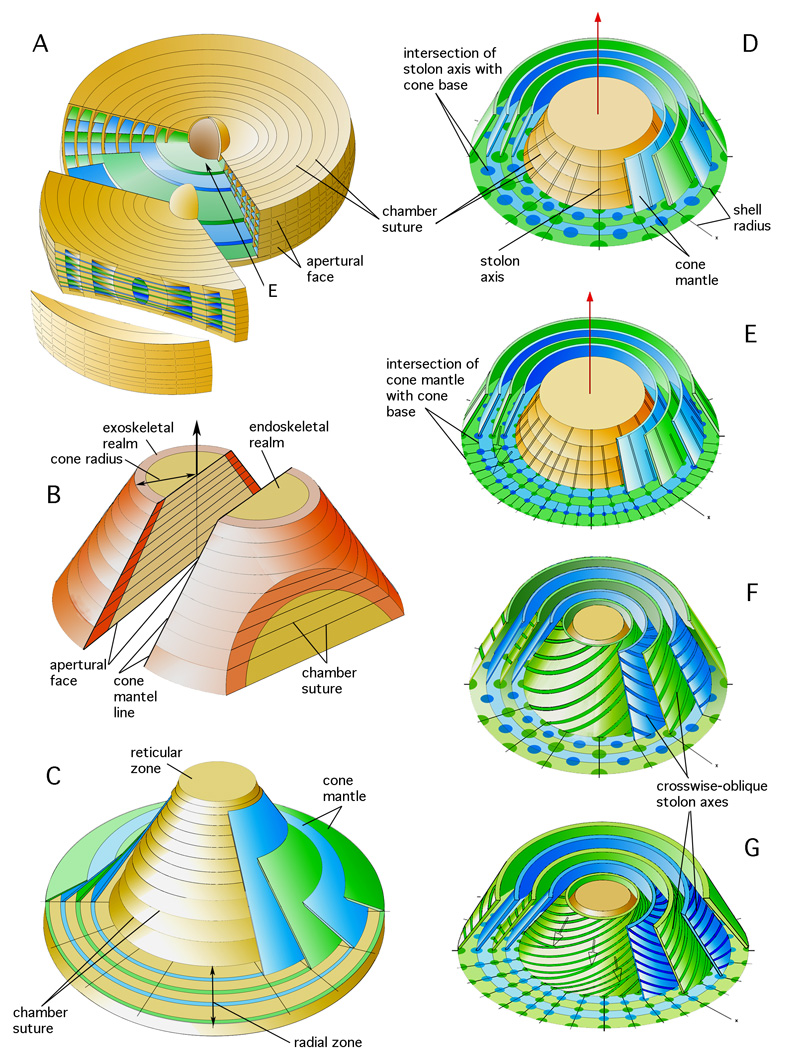
Figure 80: Stolon planes and foramenal axes in discoidal-annular and conical-uniserial shells. Schematic, not to scale.
A: Discoidal shell with a broadening periphery. Green and blue stolon planes are added step by step to the equatorial plane (E) as the shell margin thickens during ontogeny. The sector cut from the disc is cut in
its turn in a transverse direction. B: A cone composed of a single series of discoidal chambers
of which the marginal and axial areas are differentiated by colour. Note the distribution of the marginal area, the emplacement of the exoskeleton, and of the axial area housing the endoskeleton, in axial, horizontal (basal) and transverse sections. The axis
of the shell is indicated by a vertical arrow. The surface of the cone is called
the cone mantle, its horizontal termination is the cone base. A vertical line on the
slanting surface of the cone is called a cone mantle line. The cone radius is indicated by a double arrow. C: The stolon axes are distributed on cone mantles
in conical- uniserial foraminifera. If the cones increase their radial dimension
markedly during growth, additional cone mantles are added in order to maintain the radial distances between the cone mantles
relatively constant. This addition of cone mantles disturbes the regularity of the endoskeletal structures. In the models D-G, the addition of cone mantles during ontogeny is not taken into account. D-G: arrangement of stolon axes on cone mantles in the so-called radial zone of the cone (Fig. 20)
is in accordance with the four basic patterns that govern discoidal structures. In conical shells, however, the stolon planes are
replaced by cone mantles. As the cone increases in radius during growth, new stolon axes are intercalated
in the cone mantles (arrows). D: stolon axes in the cone mantles alternate in radial position
as a mantle is added, e.g. Dictyoconus. E: arrangement of stolon axes on cone mantle lines aligned on a cone radius. F: crosswise-oblique arrangement of stolon axes
alternating in radial position on successive cone mantles. G: crosswise-oblique arrangement of stolon axes
in line on a shell radius on subsequent cone mantles. This structure is a characteristic
of Orbitolina (Fig. 71).